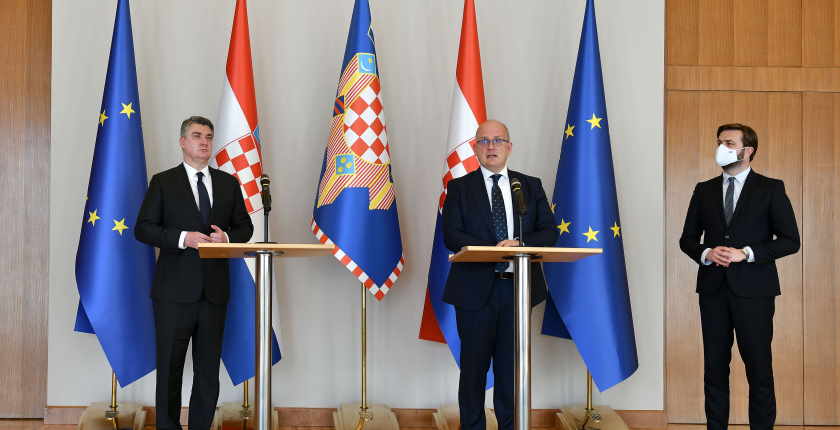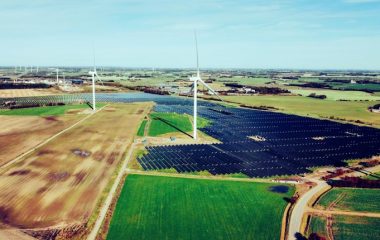
Photo: Office of the President of the Republic of Croatia/Tomislav Bušljeta
The potential for solar energy in Croatia is estimated at 6.8 GW, of which 5.3 GW for utility-scale photovoltaic plants and 1.5 GW for rooftop solar systems.
Guidelines for encouraging citizens and entrepreneurs to install rooftop solar power plants, prepared by the energy transition council of Croatian President Zoran Milanović, have provided proposals for changing the inadequate regulatory framework, which is currently the main obstacle to unlocking this potential.
The guidelines were presented to Minister of Economy and Sustainable Development Tomislav Ćorić, at a meeting attended by President Zoran Milanović and members of the council.
The guidelines could be used for preparing amendments to the law on renewable energy and the electricity market that are currently being drafted
The concept is quite clear – the production of electricity on the roofs of thousands of houses in Croatia, or industrial facilities, said Ćorić.
This could be done through the law on renewable energy sources and the law on the electricity market, which will be sent to the Croatian parliament in the coming months.
The guidelines identify the main obstacles in the implementation of projects for the installation of integrated solar power plants, and propose legislative amendments in order to remove them.
Ćorić said that a number of suppliers are offering co-financing for the installation of solar panels, a trend that will be increasingly significant.
Croatia is moving towards renewable energy and that shift is irrevocable, but it must proceed as quickly as possible, according to him.
By 2050, every second EU citizen will produce electricity for self-consumption
President Zoran Milanović said that the government is drafting a law, and that’s why the guidelines are being presented now, to see how these ideas can be incorporated into the law, while Julije Domac, the president’s special adviser on energy and climate and chair of the council, said the ministry and the president’s council have similar views on how to improve things.
According to EU regulations and plans, by the end of 2050, one out of two EU citizens will produce energy for self-consumption, and Croatia owes its citizens the opportunity to be equal with all EU citizens, he said.
The average share of solar in the electricity mix in the EU is 5%, compared with Croatia’s 0.4%

According to the guidelines, Croatia has all the natural prerequisites to be one of the most significant producers of solar energy in the EU, however, this chance has been missed because of an uninspiring legislative framework.
The installed capacity of solar PV plants is 100 MW, and the plan is to increase it to 1 GW
Electricity from solar power plants in the EU accounts on average for 5% of the total electricity produced, while in Croatia this share is only 0.4%.
In order to reach the EU average, it is necessary to install at least 800 MW of solar power plants, which is significantly more than the current 100 MW. The National Energy and Climate Plan (NECP) and the energy strategy have already set this target, and the regulation on quotas has increased it to more than 1 GW, according to the guidelines.
Investments in the power grid are also needed
According to the document, taking into account the country’s solar potential and in view of the limitations in terms of roof surface area and structure, the contracted capacity of facilities, and the profile of electricity consumption, we can assume that it is possible to have at least about 1.5 GW of installed solar power plants with an acceptable impact on the electricity grid, provided that prior research and investments in the adaptation of the network are done, since the produced electricity would, for the most part, be consumed on-site.
The potential stated in the analysis for the preparation of the energy strategy is estimated at around 5.3 GW for utility-scale systems and around 1.5 MW for rooftop solar systems.


















Be the first one to comment on this article.